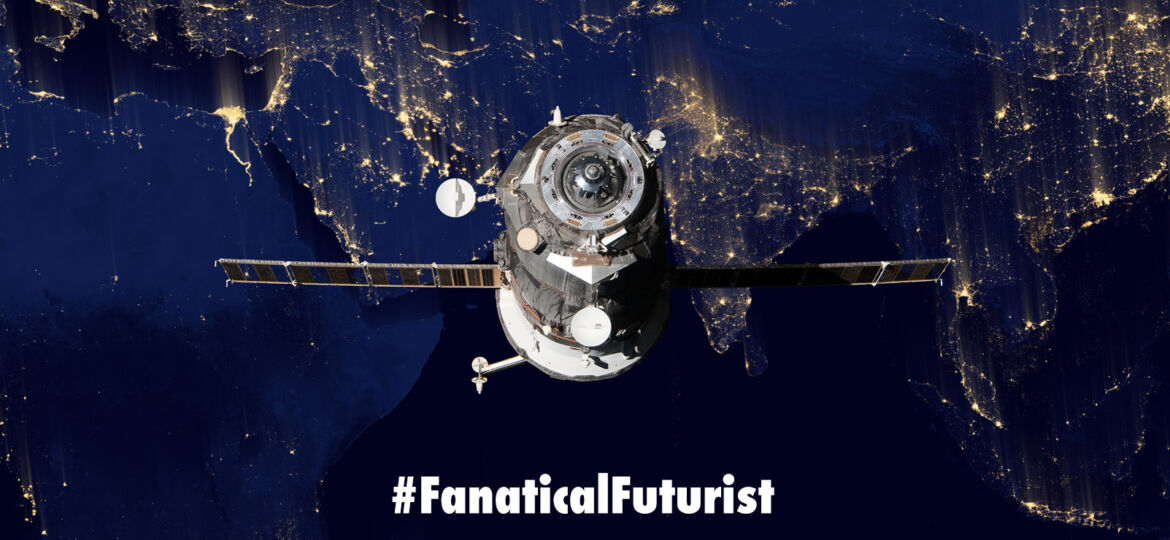
WHY THIS MATTERS IN BRIEF
Satellites have a short shelf life, once they run out of fuel they either crash back to Earth or become space junk, now we have a way to keep them going ad infinitum.
 Interested in the Exponential Future? Connect, download a free E-Book, watch a keynote, or browse my blog.
Interested in the Exponential Future? Connect, download a free E-Book, watch a keynote, or browse my blog.
While launching a satellite has gotten substantially easier and cheaper over the years thanks to the development of new re-usable rocket systems like SpaceX’s Falcon 9 rocket, nothing else has gotten much easier, unless you count creating satellites that can dodge incoming missiles “like an NBA Allstar” or being able to 3D print new satellites in space in orbit. But that’s pretty much it.
Once launched, space vehicles like satellites generally don’t get brought into the shop for maintenance. The one exception to this rule has been the Hubble Space Telescope, and even then, we were only able to repair and restore that specific piece of equipment because of the types of failures it suffered. But now, a satellite has successfully brought another satellite back online without human intervention, and long-term advances like this one, as well as the development of new nuclear satellite engines and impossible physics defying EM Engines, could dramatically extend the lifespan of satellites.
In this case the Northrop-Grumman satellite MEV-1 (Mission Extension Vehicle) docked with Intelsat 901 and serviced as the satellite’s engine. The Intelsat 901 was launched in 2001 and provided service until it ran low on fuel. The satellite was then moved to a graveyard orbit in December 2019, for a future rendezvous with the MEV-1.
The Mission Extension Vehicle is essentially an automated flying fuel tank that can grasp another nearby satellite and pull it in for servicing. The MEV-1 doesn’t actually transfer fuel to the satellite. Instead, it uses its own thrusters and fuel supply to move the satellite back into its proper orbit, allowing it to re-enter service. Vehicles that would refuel spacecraft by directly connecting to their fuel lines have also been considered, but allowing the MEV-1 to physically connect with the target and use its own thrust proved easier to engineer than the delicate process of a physical connection and in-flight fuel transfer.
While the MEV-1 uses its own fuel and thrusters for these manoeuvres, one MEV is capable of servicing multiple satellites. The contract between Northrop-Grumman and Intelsat calls for Intelsat 901 to return to service for five years, after which it will be moved back to a graveyard orbit. At that point, MEV-1 will detach and move on to other customers.
This is the first time anyone’s ever re-orbited a satellite in this fashion, so it’s not clear how many vehicles a craft like MEV-1 can bring back to life, or how this would change the way we use satellites. It seems likely, however, that the end result will be fewer launches, longer satellite lifetimes, and less space junk cluttering our orbits, and if it’s cheaper to launch one satellite and a fuel tanker than it is to build and launch two satellites, the long-term result will be an improvement on multiple fronts.
If satellites can be designed to be repaired or augmented post-launch, a new array of options could become available. Could satellites be upgraded over time? Could we improve satellite imaging by integrating an upgraded CPU or AI processor, delivered years after the original launch via CubeSat “expansion sat?”
Such concepts sound kind of crazy at the moment. But ever since Sputnik demonstrated the amazing capabilities of a beach ball with antenna sticking out of it, we’ve treated satellites as a one-shot resource, with no possibility of expansion or improvement after launch. Now that it’s possible to refuel them we’ll undoubtedly see companies experimenting with other upgrades, and finally satellites will get to age and grow old in orbit like they never have before.
















